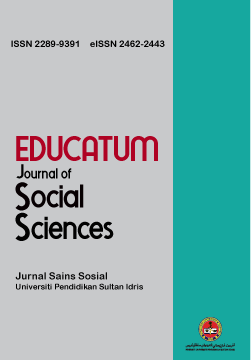Synthetic phonics, the digital humanities, and the teaching of beginning learners of English
Fonik Sintetik, Kemanusiaan Digital dan Pengajaran Bahasa Inggeris di Peringkat Permulaan
DOI:
https://doi.org/10.37134/ejoss.vol7.2.fa.1.2021Keywords:
phonics, phonemic awareness, reading studies, digital humanitiesAbstract
There is a rich research literature on phonics and related topics such as phonemic awareness and measurements of the benefits of phonics for later success in reading. What seems to be missing is a theoretically sound account of phonics itself as a discipline. This paper traces the way the present situation came about, and restores phonics to its true place between the study of spoken language and reading studies. The problems caused by the present situation fall on the shoulders of teachers in the classroom, who may be required to teach using phonic methods without being adequately guided on what they are supposed to do. Taking a teacher-centred “digital humanities” approach to phonics, the paper proposes a device that could provide the teacher with phonic information about English words much as a dictionary provides their meanings.
Downloads
References
Chomsky, Noam. 1957. Syntactic Structures. The Hague: Mouton.
Chomsky, Noam. 1965. Aspects of the Theory of Syntax. Cambridge, MA: MIT Press.
Dehaene, Stanislas. 2009. Reading in the Brain. New York: Viking.
Dehaene, Stanislas. 2014. Consciousness and the Brain: New York: Viking.
Dolch, Edward William. 1948. Problems in Reading. New York: Garrard Press.
Flesch, Rudolf. 1955. Why Johnny Can’t Read. New York: Harper & Row.
Gimson, A. C. 1962. An Introduction to the Pronunciation of English. London: Arnold.
Goodman, K. 1967. “Reading: A Psycholinguistic Guessing Game.” Journal of the Reading Specialist (May):126–35.
Jones, Daniel. 1950. The Phoneme: Its Nature and Use. Cambridge: Cambridge University Press.





